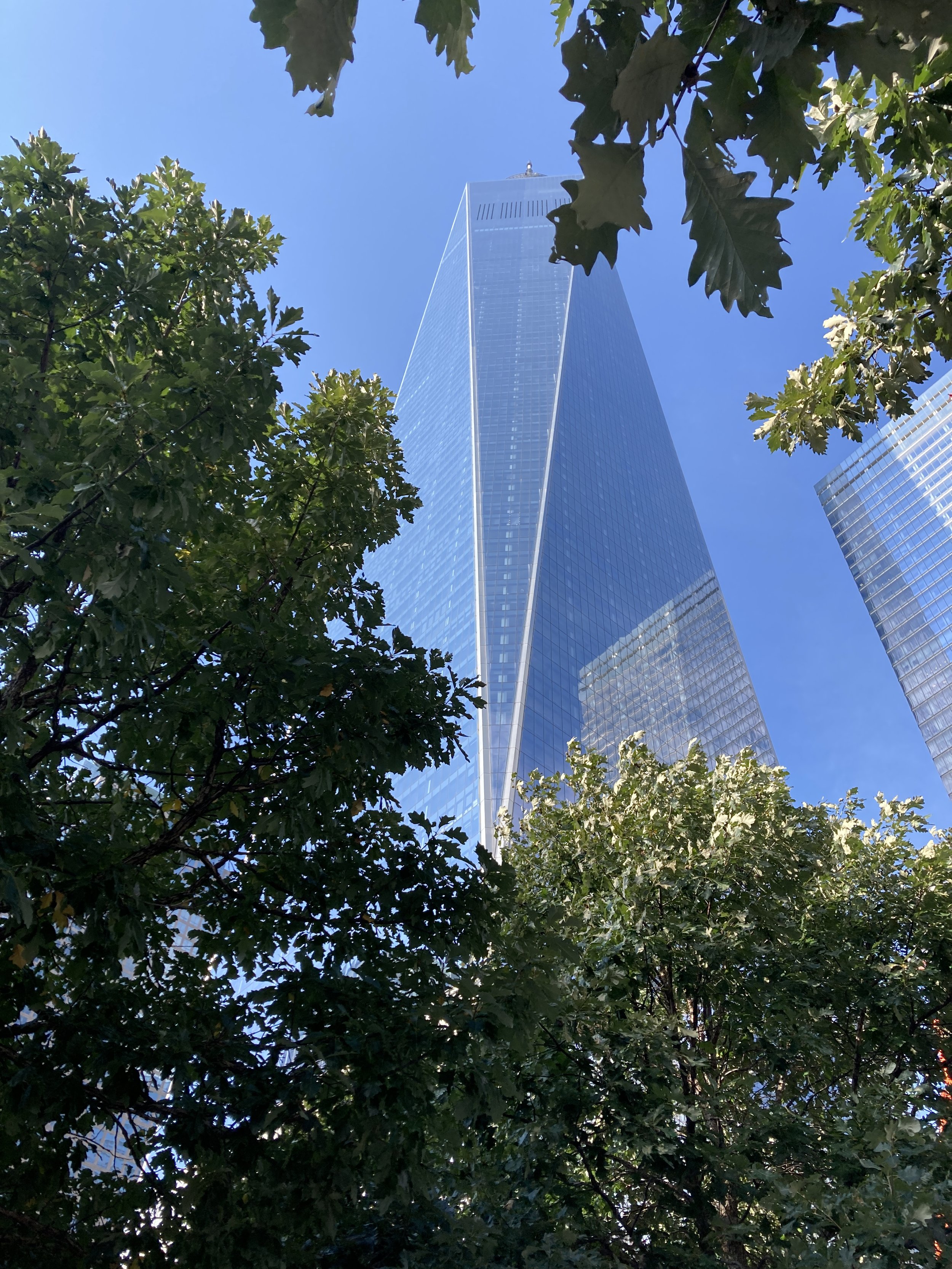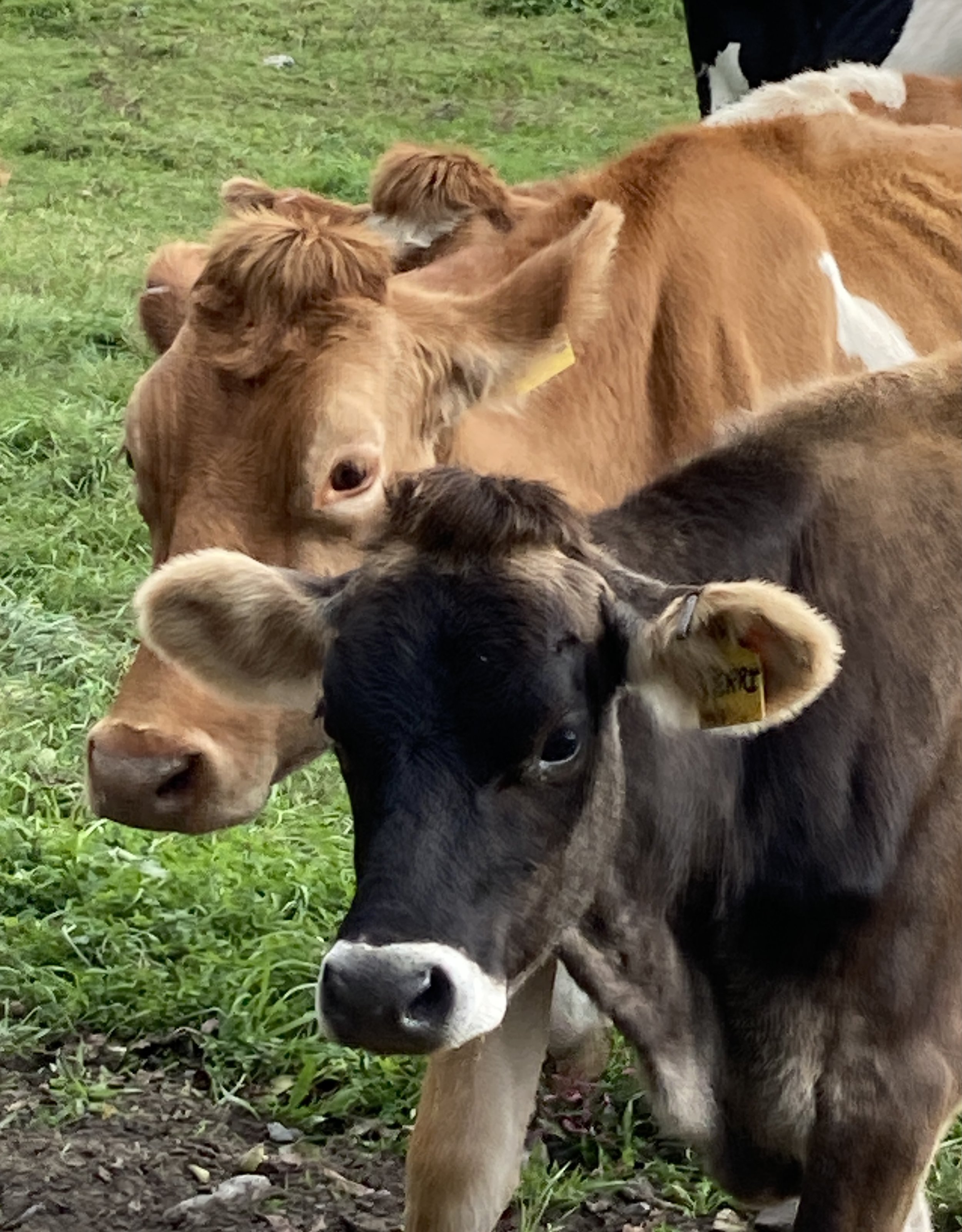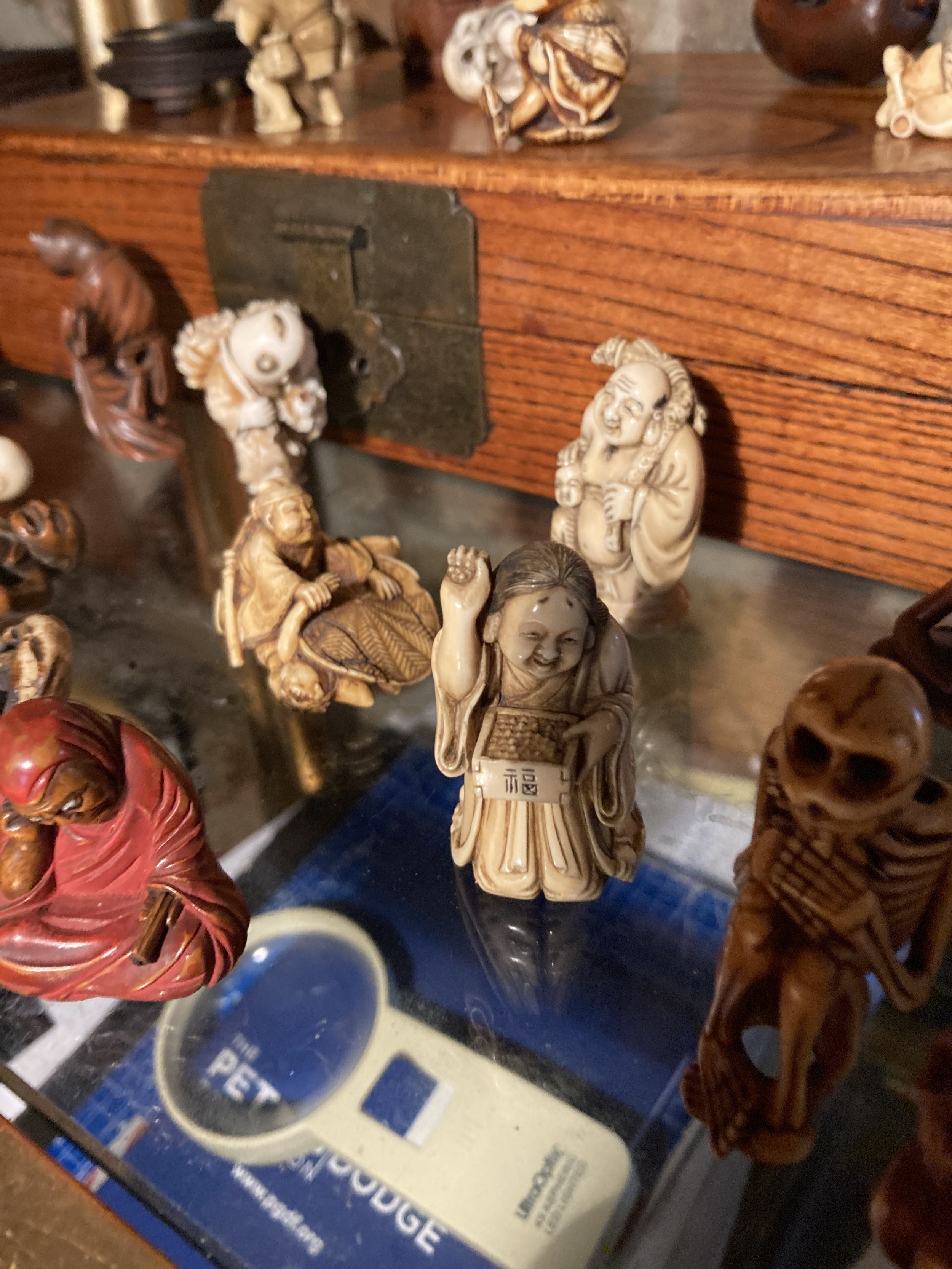New York & Beyond
Dispatch IV
Dear Vagabonds,
One of the beauties of trains is that the big locomotives take you from center city to center city. No driving or taxiing or Ubering out to far away airports to haul your personal goods onto conveyors, and then grapple with TSA agents; unbolting your pants before getting on trams only to be crowded into the big, long jet-tube with other unhappy travelers.
Thus we didn’t have to take the taxi from LaGuardia Airport outside of New York City as we approached the Big Apple on our arrival. The Pennsylvanian, train 42 from Pittsburgh, simply rolled underground and we arrived at Penn Station, a block from our hotel.
Ah New York!
It is big and muscular, even in its current semi-post-COVID state. The energy felt good and we enjoyed our few days there while dining with a long time publisher friend of mine (George published Thumbs, Toes and Tears and Last Ape Standing) and his wife, Linda; a very close friend from college days, Rich and his wife Maggi, who created a spectacular send off meal for us; and my agent who took me for lunch to the Century Association in Midtown, one of the most fascinating clubs I’ve ever visited (not that I’ve been to many).
The Century Club is the oldest continuous organization of its kind in the country, made up of some 2000 members whose main purpose is to talk with one another. It’s an impressive group, even though the only requirement is that members pay a fee, get the okay from the board and show a “breadth of interest and qualities of mind and imagination that make [patrons] sympathetic, stimulating, and congenial companions in a society of authors and artists.” Mark Twain called the Century “the most unspeakably respectable club in New York.”
We like Twain’s Take on Travel
The list of writers and painters who have spent their time there is a who’s who of fine artists. John showed me a chair signed by Charles Dickens. Somewhere he said there was also a table inscribed by the great novelist William Makepeace Thackeray. On one wall I saw an original Andrew Wyeth just hanging there, as if just anyone had one in their house. Other great writers like Ralph Ellison and Edith Wharton have also hung their hats and cloaks there. On every floor you’ll find an embarrassment of leather and excellent realistic art, dark wood and acres of floor to ceiling books. I was in heaven, and John and I had a fine meal while doing what Century clubbers do best: talk. With luck maybe all of that yakking will conjure some books or movies. You have to start somewhere
THE HIGHLINE AND 911
Cyndy meanwhile continued carrying on her Corporate Art business, remotely, while also managing to track down some Teuscher Chocolates. She’s such a predator. We explored New York’s Highline, one end of which was only a couple of blocks away from our hotel, meandering like a couple of stray dogs through this remarkable park as it wound its way three stories above the streets for 15 blocks on the city’s lower west side.
The Highline is difficult to describe because it’s so unique. The original was created in 1933 by the New York Central Railroad as an elevated spur designed to move New York’s produce and dry goods in and out of the urban core while avoiding the congested cars, carts, trolleys and pedestrians the big city was dealing with. By 1910, more than 540 people had been killed by the trains that thundered through the west side of the city.
New York’s Highline - Rather Than Tear it Down, Locals Came Up With This Far Cooler Idea
Many of the tracks of the new Highline still remain, but have been filled with gardens and walks made of stone, concrete or wood. Enormous trees and local fauna surrounded us, and created a place entirely different from the metropolis below where 8 million people come and go. I rarely think of New York as restful, but here, lollygagging above the shoulders of hundreds of thousands of harried New Yorkers, Cyn and I found it positively calming.
New York is a busy place. I often wonder how it manages to operate. Everyday 1.5 million packages are delivered to New Yorkers. In 2018 delivery trucks in the city racked up 471,000 parking tickets, a direct result of Amazon being Amazon. If you’re unfortunate enough to be driving a car through Manhattan’s busiest streets, you’ll be moving at 7 mph, a jogger’s pace. Gay Talese, in his wonderful Esquire article about New York wrote in 1960, “At 5 a.m.Manhattan is a town of tired trumpet players and homeward-bound bartenders. Pigeons control Park Avenue and strut unchallenged in the middle of the street. This is Manhattan’s mellowest hour. Most night people are out of sight — the day people have not yet appeared.” This might still be true. But Cyn and I didn’t check.
We DID pay a visit to the 911 Memorial after walking the end of the Highline. The memorial was closed and that was bad news for us. We were able to walk the exterior grounds, and that did us good. Two massive basins mark the locations of the fallen towers, and the names of everyone of those who died that terrible day. It’s difficult to get the image out of my mind of those who faced having to burn to death or plummet to the street below. How does anyone make such a choice? Yet people did.
The basins give you a sense of falling and loss as it’s millions of gallons of water tumble into the blackness, but water is also a symbol of renewal, and here it never stops flowing. It was saddening, but also somehow soothing, like a prayer.
The New World Trade Center Soars Into a Perfect Blue Sky
After three days in Manhattan, we packed our bags to catch Amtrak’s Ethan Alan to Vermont. Our hotel location served our departure even better than our arrival did. We simply walked out of our hotel door (Marriott’s Fairfield Inn), across the street and directly into Moynihan Train Hall. The Hall is newly renovated and a massive upgrade and expansion of the current Penn Station that sits beneath Madison Square Garden, a block away. Could rail be making a comeback?
Not long ago, the Moynihan used to be the main branch of the New York City Post Office, built because the original Pennsylvania Station brought so much mail into the city. The architectural firm of McKim, Mead and White (the same firm that designed the Century Club) also designed the original Pennsylvania Station as well as the Post Office in 1913, both magnificent and immense Beaux-arts buildings that sprawled across New York’s West Side.
When post-war passenger train travel plummeted, the original Penn Station was demolished in 1963. The new Penn Station remained underground, and in 1968 the newest version of Madison Square Garden was constructed on top of the station. Now that venue is being eyed for demolition too. So stand by.
The New Moynihan Train Hall
There’s a bizarre connection between Stanford White of McKim, Mead and White, Madison Square Garden and Penn Station that finds its roots in Pittsburgh where we began our journey. White used to love dining in Madison Square Garden’s Cafe Martin (he designed this structure too). But on June 25, 1906 doing that turned out to be a bad idea because the same evening Harry K. Thaw — scion of a Pittsburgh railroad magnate, and the husband of a stunning actress and dancer named Evelyn Nesbit — walked up to the famous architect and in full view of hundreds of the restaurant’s patrons shot White in the head three times with a pistol, killing him instantly. Nesbit had come to New York from Homestead just outside Pittsburgh where she grew up, but, according to testimony had been raped by White after she moved to New York when she was only 16. Thaw, met Evelyn later in New York, but hated White for “ruining” his wife, and also felt White had purposely kept Thaw out of New York’s high society.
The Original Pennsylvania Station Before It Was Demolished in 1963. The Moynihan Train Hall (left) is Still a Hole In the Ground
The trial became the media event of its day like the trials of Saco and Vanzetti or O.J. Simpson. After two trials, Thaw was acquitted by reason of insanity, the first legal defense of its kind. He was remanded to a sanitarium, and then released 10 years later. Evelyn Nesbit eventually divorced Thaw and after a career as a dancer, actress and an occasional silent movie actress, died in Santa Monica in her early 80s. Thaw died at the age of 76, having managed to turn a $40 million fortune into $1 million. In his will he bequeathed Evelyn $10,000, the equivalent today of about $116,000 today.
Evelyn Nesbit, about the time she visited Stanford White’s “studio.”
While waiting for the Ethan Alan to be announced for boarding we were looking forward to watching the beautiful and increasingly colorful views of New York and Vermont. After all, wasn’t this “peep season” New when New England’s’ leaves burst into fiery golds, reds and purples. But when the train was announced, we somehow managed to lose every seat with a view on the train, and got this terrific view …
Grey Plastic - Our view on the Ethan Alan
Eventually we found better seats, and skated along the Ethan Alan through a corridor of green trees. Autumn was holding out on us. Maybe that was appropriate. Vermont, after all, is bastardized French for “green mountain.” Throughout the afternoon, five hours, we clicked and clacked north. In time darkness began to descend, leaving us to quietly watch the bruised, purple clouds on the horizon disappear over a setting sun.
VERMONT
A long-time friend of mine and his wife (also now close friends with Cyn) are about the most gracious hosts you can imagine. Over the years, Tom has acquired more than a thousand acres of spectacular Vermont land not far from the small town of Poultney, mostly to keep it from unwanted development. His modest house sits below a ridge of high mountains and untouched forest, with a little room for milking cows and exploring the property with a couple of ATV’s. We hopped on.
We had begun to notice the slightest hints of the colors that would soon sweep through these magnificent stands of maple, oak and birch.
A view from Tom and Ina’s Home In Vermont
A chill had come to Vermont the blustery morning we awoke to explore the forest on Tom’s ATVs. I heard Cyn in the bedroom singing “How I Hate to Get Up In The Morning!” Cyn often sings songs like this. Part of the game is for me to figure out which tune she’s humming. Because she was a drum majorette, I notice a lot of the songs seem to come from John Phllips Sousa’s musical library. Anyhow, we marched out Sousa style, picked up the ATVs with Tom and headed up to the top of the ridge, bouncing and rolling up and down gullys and through the mountains’ muddy creeks. The views were breathtaking.
On the way back, we made a few friends…I don’t recall their names. Maybe Bessie and Martha??
Poultney is a throwback from another time in New England, a town that was once important for its textiles and strategic placement midway along the original Vermont turnpike that ran from Burlington to Albany. Now it is quiet and quaint, but, truthfully, struggling. Tom’s wife, Ina, has done a lot of work with the town’s historical society, and she and Tom are supporting efforts to help pre-school children get food and day care. They also helped renovate this beautiful church that sits in the town’s center.
Poultney - A Throwback from Another Time
Poultney did leave its mark as the birthplace of two major media titans: Horace Greeley and George Jones. Jones was the co-founder of the New York Times, and Greeley the founder of New York Tribune. It was Greeley who famously encouraged a young man to, “Go west!” which, of course, tens of millions did. (Thus California.) We would soon be heading west too, but not until we first made our way clear to Newfoundland, Canada, thanks to Tom’s suggestion, in search of icebergs and whales.
STRANGE LITTLE CREATURES
Before we headed to Boston to see our daughter Molly and her beau, Ben, Tom showed us something I had never seen nor heard of before: tiny hand-carved, Japanese sculptures fashioned in the 1700 and 1800s called netsukes (Tom, the expert, pronounced them neskies).
In Japanese lore these tiny figurines were hung in a line on kimonos. They’re rich with fantastical creatures that represent every aspect of Japanese culture from folklore and religion to crafts, trades, and professions — every kind of person or creature, real and imagined. My favorites are what Tom called onis, little mythical creatures that represented fear or courage, strength, mischief or mystery. I had never seen anything like them and was stunned by the detail of the work and the richness of the folklore behind them, something like representations of our Paul Bunyon and his blue ox, Babe, or Pecos Bill, Joe Magarac and John Henry, or maybe more modern icons like Andy Warhol, Billy Porter or even Rachel Carson.
After three days breathing nothing but beautiful air and lots of great conversation, Cyn and I packed our thickened, vagabond bags and headed off on the next leg of the journey: Boston and Maine.
More on that in Dispatch V. I’ll leave you with a song by George Harrison that seemed appropriate as we drove east to the Atlantic Ocean, George Harrison’s - Any Road ( https://m.youtube.com/watch?v=r8fFdc-karA). Guaranteed to get you in the mood!
See you at the next stop. Sending you all love and good wishes. Meanwhile …
Crack on!
C-squared (Chip & Cyn)
This is a series about Cyndy and Chip’s Vagabond Adventure - our journey to explore all seven continents, all seven seas and 100+ countries without traveling by jet. COVID has forced us to begin the United States, not a bad start. What will the world be like following a global pandemic? What people will we meet? What cultures, places, languages and music will broaden us? We’ll find out. We hope you’ll join us on our #vagabondadventure.















